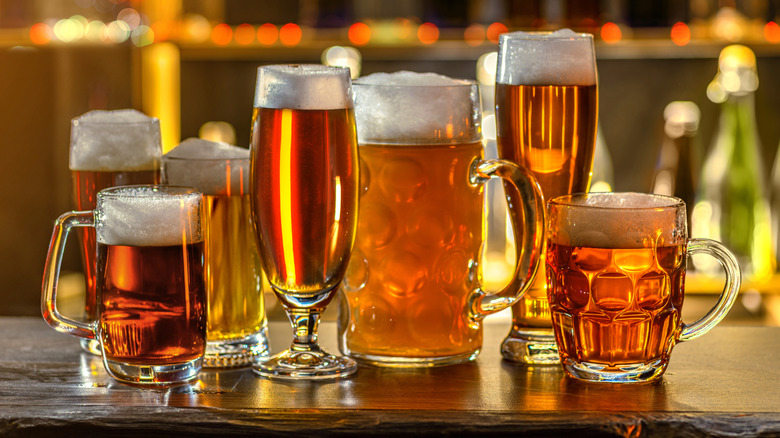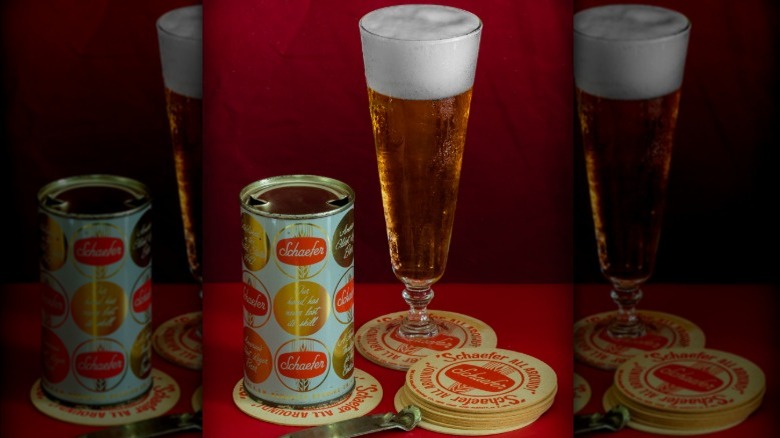The Old-School American Lager We Rarely See People Sip On Anymore
America has a long, rich tradition of beer brewing. By 1873, there were over four thousand breweries in the U.S., a record not surpassed until 2015. But one of the most popular breweries of yore is actually one you probably haven't heard of (though maybe your grandparents have): Schaefer Beer. Started in 1842, this was actually one of the first lagers brewed and brought to market in the U.S., as at the time, mostly English-inspired ales were brewed and sold. It was known for being light, crisp and easy to drink. It was actually one of the most popular beers for a very long time, and even came to sponsor the Brooklyn Dodgers and the New York Mets. Hell, it even survived Prohibition by turning itself into a dye factory and making "near beer".
But by 1976, they closed their last plant in Brooklyn, having shifted their brewing operations to Allentown in Pennsylvania. They were acquired by Stroh's, which in turn was acquired by Pabst — even modern beer drinkers should be used to acquisitions by now. It's kind of shocking to think that for most of the 20th century, Schaefer was one of the top-selling beers in the U.S., but now it's barely known. And like most things industrial and 20th century, its brewery in Williamsburg has been converted to, you guessed it, luxury apartments. While it has been revived, you still won't find it on our favorite top-selling beers.
Will Schaefer's comeback last?
The story of Schaefer is perhaps one of the most American we can imagine. Created by upstart immigrants, it quickly became an empire, only to slowly crumble by the 1980s. To me, it's astounding that it weathered the storm of anti-German sentiment and Prohibition, only to be undone by the 1970s and 1980s economic crises, and its brand assets traded around like Pokémon cards.
But this Lazarus-like beer has been revived by Pabst. And while it's being brewed in Utica and not Brooklyn, they've promised to make a quality lager that's light, approachable and easy to drink. It's only really available in the New York markets at the moment, since Pabst seems to be wielding their massive brand portfolio to be in every market possible. To be honest, it will hopefully be more than a novelty. Resting on the name brand won't mean much to drinkers if the product doesn't deliver, particularly if that brand name hasn't been used for over 40 years.
While there's a crowded market for beer, not a lot of companies make 3.8% ABV beers, and while that's exceptionally light, sometimes that's all you need. While you won't see too many folks sipping the beer, it's cool to see a tradition and a piece of American history live on.

